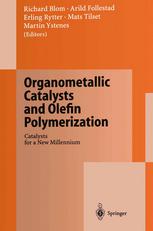

Most ebook files are in PDF format, so you can easily read them using various software such as Foxit Reader or directly on the Google Chrome browser.
Some ebook files are released by publishers in other formats such as .awz, .mobi, .epub, .fb2, etc. You may need to install specific software to read these formats on mobile/PC, such as Calibre.
Please read the tutorial at this link: https://ebookbell.com/faq
We offer FREE conversion to the popular formats you request; however, this may take some time. Therefore, right after payment, please email us, and we will try to provide the service as quickly as possible.
For some exceptional file formats or broken links (if any), please refrain from opening any disputes. Instead, email us first, and we will try to assist within a maximum of 6 hours.
EbookBell Team

4.7
106 reviews"Catalysis is more art than science", probably all of you have heard and even used this expression. Whether it is true or not, it alludes to the experience that new catalysts are hard to find, and near impossible to predict. Hard work and a lifetime of experience is invaluable. However, a keen mind might give insight into where to search, but not necessarily about where to find the answers. Historically, "quantum leaps" have often arisen from serendipity - we all know the story about the nickel-contaminated reactor that triggered further research towards the first coordination catalyst for ethene polymerization. Taking advan tage of this event, Karl Ziegler became the first chemist to earn both a Nobel prize and a fortune for the same invention. A broken NMR tube helped Walter Kaminsky discover the effect of high concentrations of methylaluminoxanes as co catalysts for metallocenes. When air reacted with the concentrated trim ethyl aluminum solution, sufficient amounts of methylaluminoxanes were formed, and the lazy catalyst dormant in the NMR tube suddenly became sensationally active. Ziegler and Kaminsky were lucky and had the genius needed to take advantage of their luck.